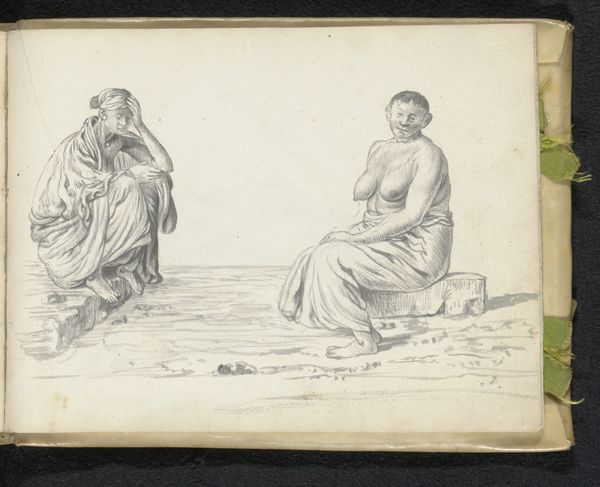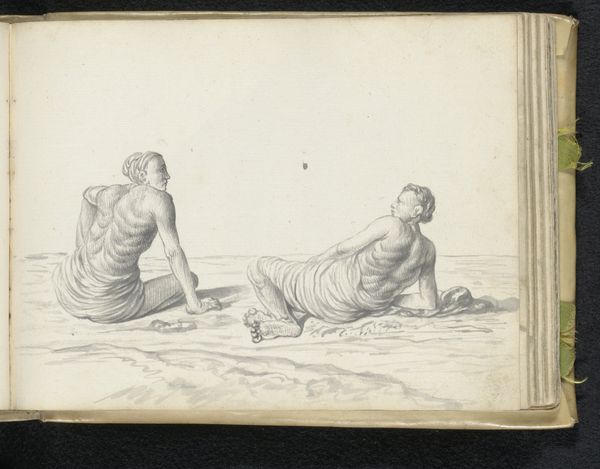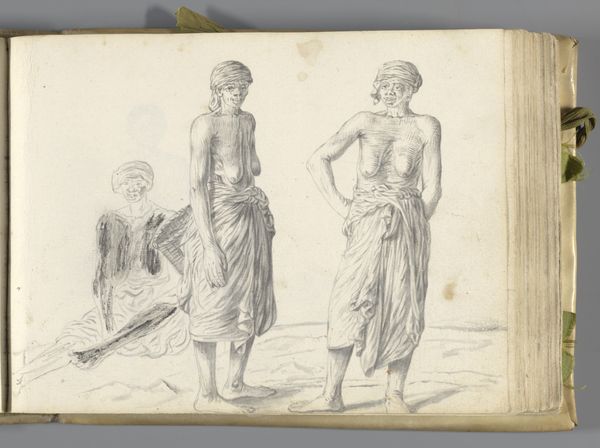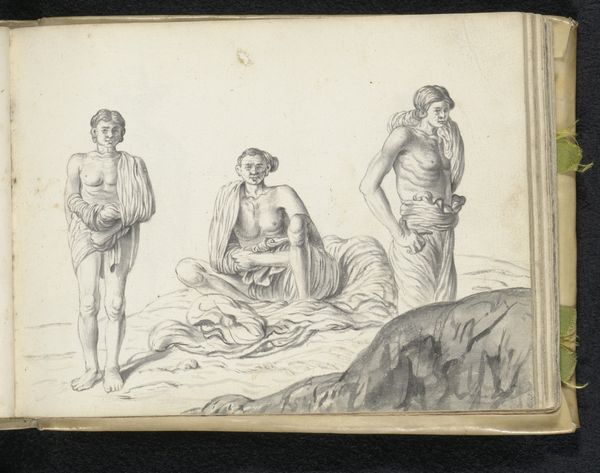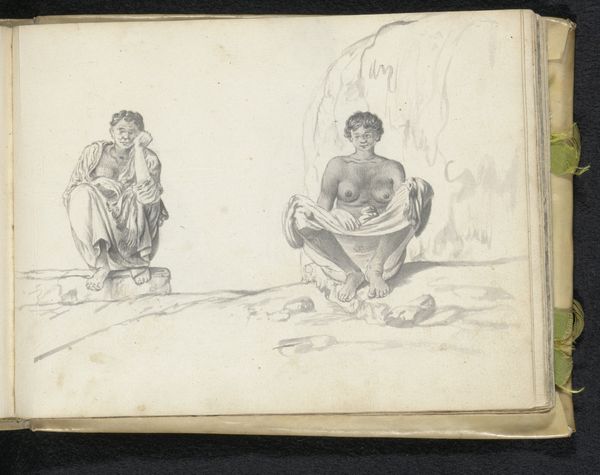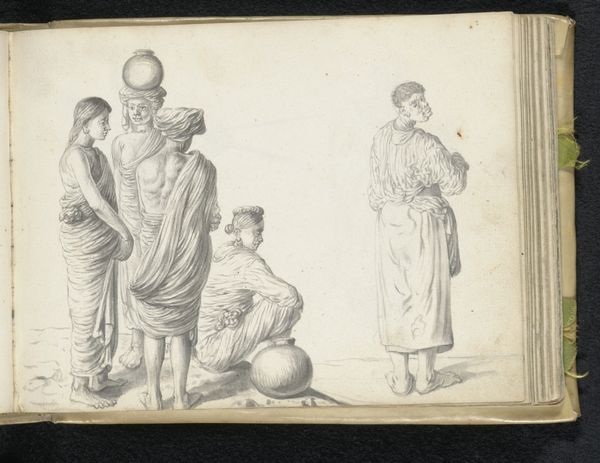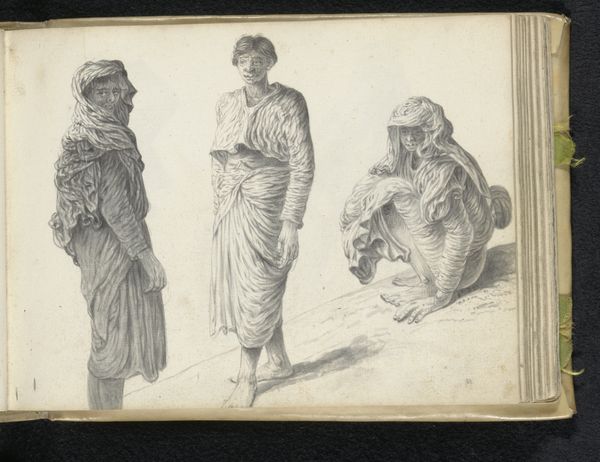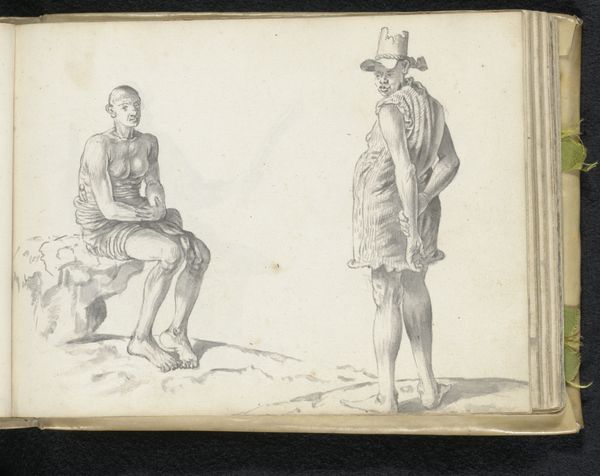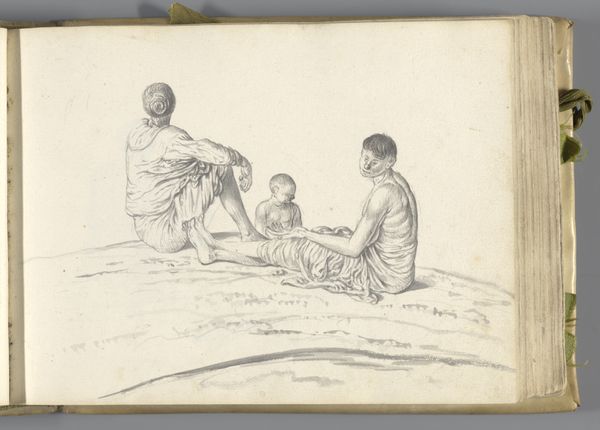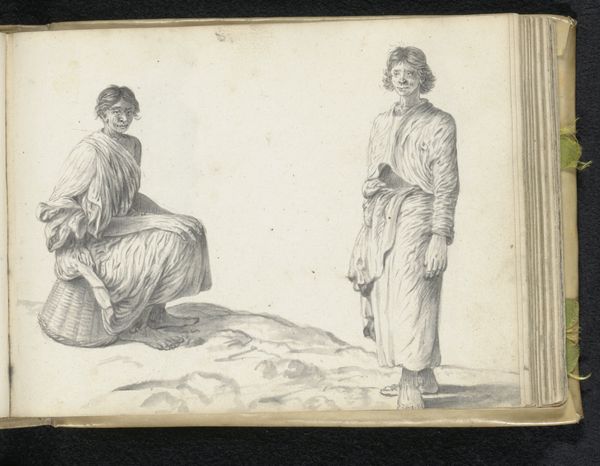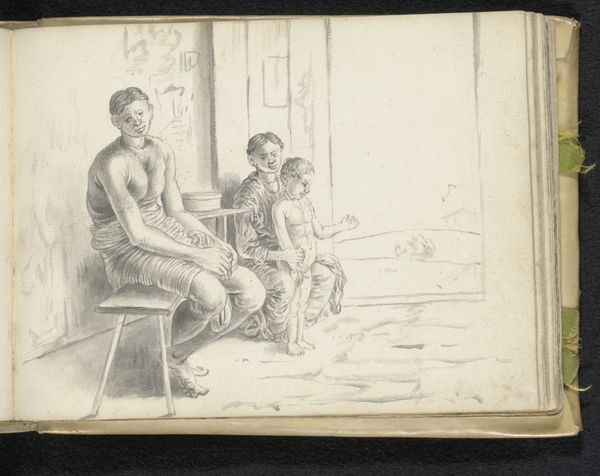
drawing, paper, pencil
#
drawing
#
dutch-golden-age
#
figuration
#
paper
#
coloured pencil
#
pencil
#
genre-painting
Dimensions: height 148 mm, width 196 mm
Copyright: Rijks Museum: Open Domain
Editor: So, this is "Two women and a man," a pencil drawing on paper made around 1662 by Esaias Boursse. I'm struck by how matter-of-fact it is. The figures are presented so plainly, without much emotion. What do you see in this piece? Curator: Well, considering Boursse was a Dutch Golden Age artist who traveled extensively with the Dutch East India Company, I see a visual record of encounters, but filtered through a colonial lens. The matter-of-factness, as you put it, speaks to a certain detached observation that was characteristic of much travel art from that period. This wasn’t about idealized representations but supposedly accurate portrayals for a European audience hungry for knowledge of the 'exotic' East. Where do you think this scene takes place? Editor: Hmm, the style of clothing does hint at somewhere tropical... Perhaps Indonesia, considering the Company's presence there? I didn’t really consider the power dynamics at play, to be honest. Curator: Exactly! Now consider who might have commissioned or bought such a drawing. Most likely, it was someone involved in the Dutch East India Company. And why would they want it? Was it pure scientific curiosity, or did these images also serve to reinforce a sense of European dominance and knowledge over other cultures? What does it mean to portray these individuals outside of a western construct? Editor: I see. It’s less a neutral snapshot and more a construction of identity through the eyes of the colonizer. The drawing becomes a form of visual inventory or perhaps a way of possessing or 'knowing' the other, which now strikes me as deeply unsettling. Curator: Precisely! By understanding the social and political context, we move beyond a simple aesthetic appreciation and confront the complicated legacy of colonialism embedded within the seemingly objective lines of the drawing. Editor: This really shifts my perspective. I now see the drawing as less an innocent observation and more of a document embedded in complex power structures. Thanks for pointing that out. Curator: And thank you for noticing how casual the work looks to begin with. It demonstrates just how subtly these ideologies can be embedded into visual culture.
Comments
No comments
Be the first to comment and join the conversation on the ultimate creative platform.
